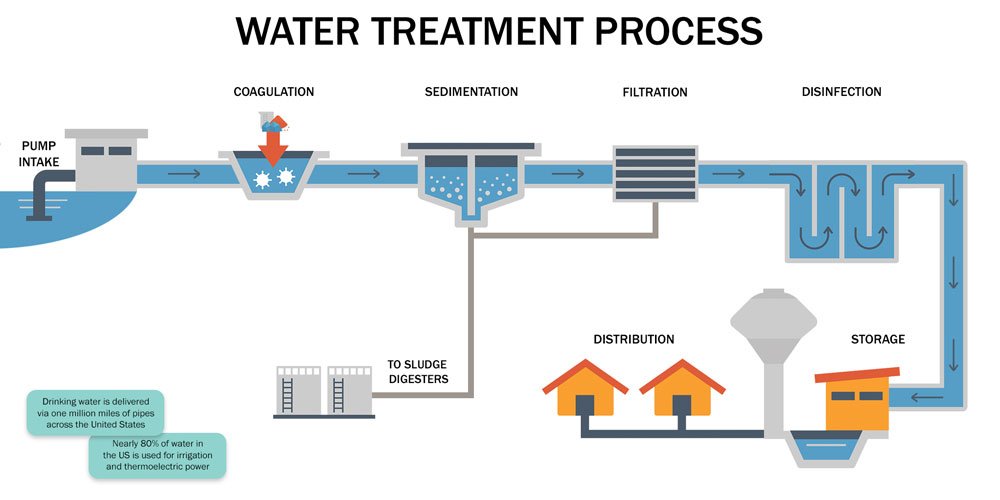The role of water treatment polymer in coagulation is crucial for impurity removal.
The role of water treatment polymer in coagulation is crucial for impurity removal.
Blog Article
The Significance of Water Therapy Polymer in Modern Environmental Solutions
In today's context of escalating environmental obstacles, the role of water treatment polymers has arised as a keystone of efficient water purification processes. The landscape is developing, and the effects for future water treatment techniques necessitate a closer evaluation.

Role of Water Therapy Polymers
Water therapy polymers play an essential function in boosting the efficiency of water purification processes. These artificial natural substances function mainly as coagulants and flocculants, promoting the gathering of suspended particles and colloids in water. By promoting the formation of bigger collections, or flocs, these polymers dramatically improve the sedimentation rate and filtration effectiveness, causing more clear and cleaner water.
In enhancement to their coagulation and flocculation residential or commercial properties, water treatment polymers can likewise help in the removal of certain pollutants, consisting of hefty steels and natural contaminants. They attain this by modifying the surface area features of fragments, which boosts their communication with various other therapy chemicals. The usage of polymers can lower the quantity of chemical additives required in treatment procedures, therefore lessening prospective environmental impacts.
Another essential facet of water therapy polymers is their capability to carry out effectively throughout a variety of conditions, including differing pH levels and temperatures. This adaptability makes them important in both local and industrial water therapy centers. Eventually, the role of water treatment polymers is crucial for ensuring compliance with environmental regulations and achieving lasting water management techniques.
Advantages of Polymer Usage
The usage of polymers in water treatment processes offers countless benefits that boost both operational performance and environmental sustainability. One significant benefit is the boosted effectiveness in coagulation and flocculation, which brings about improved elimination of suspended solids and pollutants from water sources. This effectiveness not only leads to cleaner water yet likewise lowers the requirement for too much chemical additives, advertising a more environment-friendly method to water therapy.

Polymers likewise improve the security of water therapy systems, enabling even more regular performance under varying operational conditions. Their versatility enables treatment facilities to adapt to different water qualities and treatment goals, thus guaranteeing compliance with regulative standards.
Kinds Of Water Therapy Polymers
Polymers utilized in water therapy can be categorized right into a number of kinds, each serving unique functions and applications within the treatment process. The key groups consist of coagulants, flocculants, and dispersants.
Coagulants, such as polyaluminum chloride and ferric sulfate, facilitate the gathering of suspended particles in water by counteracting their costs. This is essential for the removal of turbidity and various other pollutants. Flocculants, on the other hand, promote the development of bigger aggregates, or flocs, enabling easier elimination of fragments from water. Typical flocculants include polyacrylamide and cationic starches.
Dispersants are made use of to support suspensions and protect against the settling of solids (water treatment polymer). By customizing the surface area homes of particles, they improve the performance of treatment procedures, specifically in wastewater management
In addition, there are specialized polymers developed for details applications, such as biopolymers originated from all-natural resources, which frequently supply environmentally friendly choices to artificial check my reference options. Choosing the proper sort of polymer is essential for maximizing water therapy processes, guaranteeing reliable impurity elimination, and improving general water top quality.
Applications in Numerous Industries
In various industries, the application of water treatment polymers plays a substantial duty in boosting efficiency and effectiveness in handling water high quality. These polymers are used in metropolitan water therapy centers to assist in coagulation and flocculation procedures, thereby improving the removal of sediments and contaminants. In the oil and gas industry, water treatment polymers assist in handling created water, guaranteeing the secure disposal and recycling of water while lessening environmental impact.
Additionally, the fabric market utilizes water treatment polymers to help with dye removal and wastewater purification, essential for meeting strict regulatory criteria. water treatment polymer. In the food and beverage industry, these polymers are important in visite site guaranteeing the safety of water used in production procedures, adding to product quality and compliance with wellness laws
Furthermore, the mining market benefits from water therapy polymers, which are made use of to minimize water usage and boost the recuperation of useful minerals from ore. In general, the versatility and performance of water therapy polymers across these varied applications highlight their important role in advertising sustainable techniques and securing water resources in modern-day industrial procedures.

Future Trends in Water Therapy
Emerging fads in water treatment are significantly defined by the integration of sophisticated technologies and ingenious materials. water treatment polymer. The adoption of clever water administration systems, which make use of real-time data analytics and IoT tools, is revolutionizing the means water quality is kept an eye on and managed. These systems allow very early detection of pollutants and optimize treatment procedures, leading to improved performance and reduced operational prices
Moreover, the use of water therapy polymers is gaining traction as they use substantial advantages in flocculation, sedimentation, and filtering procedures. These polymers promote the removal of contaminants at reduced does, therefore reducing chemical usage and ecological influence. The growth of biodegradable and environment-friendly polymers is additionally coming to be a vital emphasis, aligning with worldwide sustainability goals.
In addition, developments in membrane click here for info layer technology, such as nanofiltration and turn around osmosis, are boosting the removal of micropollutants and offering drinkable water from unique resources, like salt water and wastewater. As governing structures advance and public need for tidy water escalates, these trends are expected to form the future landscape of water therapy, advertising an extra lasting and durable technique to water source administration.
Final Thought
Finally, water therapy polymers are necessary elements in contemporary environmental services, considerably improving water purification procedures via boosted coagulation and flocculation. Their capability to decrease chemical usage while effectively removing impurities highlights their value in accomplishing regulatory conformity and sustainability objectives. As markets continue to focus on tidy water access, the ongoing growth and application of these polymers will play a vital role in addressing the obstacles of water treatment and environmental management in the future.
Report this page